Solex 4A1 Rebuild
If you have a 320/6 like me, your engine might benefit a lot from rebuilding your carburettor. I thought my engine was working fine, except for a few tuning issues, but after rebuilding the carb I understood how wrong I was.
Description of the carb
The Solex 4A1 is a four-barrel downdraft carburettor, with two small barrels (which power the engine under normal circumstances) and two large barrels (which open up at around 3500-4000rpm to deliver more fuel). The intake manifold of the 320/6 is such that one pair of barrels serve three cylinders and the other pair the other three cylinders, independantly. This means that if you have a good idle needle and a bad one, you might have an acceptable but poor idle without being able to properly regulate it. Half of the engine would operate normally while the other half would run too lean. Since the six has enough power to keep running properly even if some cylinders don't deliver enough power, you will not have problems but simply a "rough" idle.
Over the years, the operation and efficiency of the carburettor will diminish because of wear and accumulating dirt. Taking everything apart, cleaning and fitting new gaskets should be very beneficial.
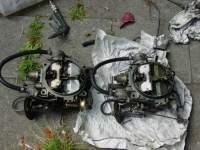
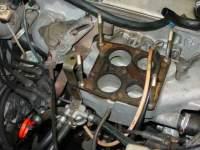
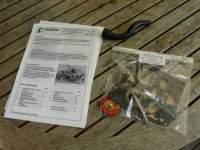
Dismantling the carb
There are several screws (eight to be exact) on the top of the carb that will release the upper part of the housing. The idle air jets and idle needles are located behind the small barrels in the top of the carb. As I said, I had one side with a clogged idle needle and one side with a fine needle. Here are pictures that compare both:
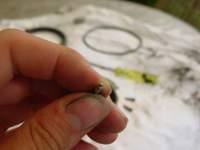

There is also an automatic choke which is activated by a bimetallic spring and an electrical heating element. The functioning of the choke is also vaccuum controlled by a metal rod connected to a membrane. The position of the choke housing determines the fuel mixture richness. Turning the house more counter-clockwise will enrichen the mixture, clockwise will make the mixture more lean.
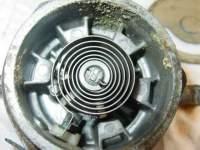

On the underside of the top part you will find the main jets and main needles. My main jets were still okay, but I had better ones I took from the other 4A1 I had sitting around. The main needles are operated by a lever between the big barrels.
The middle part of the carb houses the fuel float chamber, which is located between the small barrels. Fuel is admitted to this chamber when the level drops below a certain threshold, at which point the fuel cut-off is lifted by the floater to admit more fuel. If the fuel level in the chamber is incorrect, you will have to bend the floater arms up or down in order to allow more or less fuel in there. Here's a picture of the floater and cut-off in place, and next to it you see the floater and it's parts individually:
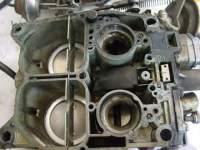

The small barrel top valve is operated by a rod which is linked to the choke linkage, so it's regulation depends on the choke housing position as mentioned above. The big barrel valves are operated by a vaccuum diaphargm and are put back in closing position by an adjustable spring. The vaccuum unit prevents these from opening at low rpm. The axle of these valves might need some oiling or even grinding if the spring is unable to close the valves once they've been opened. It's not supposed to stay stuck in open position. Once lubricated the spring can be adjusted to close the valves properly without over tensioning.
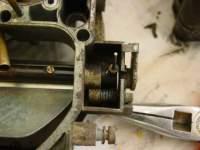
Reassembling everything
I was lucky to have two carbs laying around, so I dismantled both and selected the best parts from each to assemble a new one, using a gasket set from Walloth & Nesch. Every part was thouroughly cleaned before being refitted, and I have to say the car drives a lot better now.
I paid close attention when dismantling everything and since I did it twice, I had no problems putting everything back together. If you have a 320/6, I suggest you give it some new life by rebuilding your own carb!
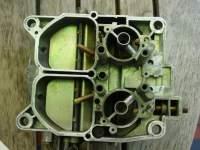

|
 |
|



